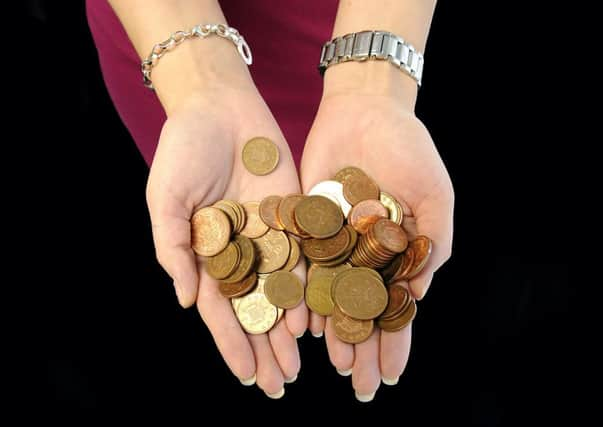Jane Bradley: A contactless future is on the cards


But for the past two weeks, the card machine at the café across the road from my office has been broken.
Every morning, I place the order for my coffee, dig around disappointedly in my pocket to find my change adds up to exactly 7p less than I need and I’m forced to head back out into the rain to traipse to the cash machine before I can get that cup of flat white in my (cold) little hand.
Advertisement
Hide AdAdvertisement
Hide AdThe café owner has placed a printed notice on the counter explaining that the machine is broken and assuring customers that they are doing “everything in their power” to remedy the problem. Yesterday, a handwritten addition appeared: “If you have any complaints, please call the office on …” One disgruntled customer too many, perhaps.
While I’m not exactly going to berate the poor baristas over their lack of card machine, it does seem to me to be a fairly small ask to be able to pay for a coffee without carrying round a wallet full of coins.
A report out this week showed that I am not the only shopper expecting 21st-century payment facilities.
The number of contactless payments made has more than doubled in the past year, according to new data from WorldPay.
Contactless cards, for those of you who haven’t received a new bank card recently, are the future. They have a little wi-fi-style symbol on them, which means that, instead of having to type in a pin code, you can merely wave it at the machine, as long as you are spending under £20. And with that – a simple flourish of the wrist – you can be on your merry way.
There are now 38.1 million contactless cards in the UK, making up more than a quarter of all debit and credit cards, although only one in ten people UK-wide say they have used the scheme.
Contactless has a major advantage for businesses – especially cafés and other small purchase outlets: it is speedy. Gone is the need to keep customers waiting while someone painstakingly types in their pin number or counts out their coppers.
And speed is important. A survey carried out as part of the report found that two-thirds of people said they would not return to a shop if the card payment took too long. Goodness only knows what these impatient customers would do if there was no card payment option at all.
Advertisement
Hide AdAdvertisement
Hide AdJust 12 years ago, chip and pin was merely a twinkle in the eye of Britain’s financial services companies. I remember, because the summer before it was launched, I was working at two different shops in St Andrews after finishing my degree.
In one, a ladies’ posh clothes emporium, we didn’t even have a cash register – merely a wooden drawer in the desk, where we stored handwritten receipts, money and bits of broken rubber bands.
At the other shop, a touristy chain, I had to learn complicated till skills on an antiquated machine that looked like the computer in The Hitchhiker’s Guide to the Galaxy.
This was an experience which mashed my brain so much that on one particularly stressful day, I forgot myself and actually tore off the customer’s Switch receipt and signed it, reverting to the role in which I was obviously more comfortable – that of the buyer, not the seller. The customer stared at me in amazement before calling my manager and asking her to process the transaction. I didn’t last long in that job.
Now, however, businesses need to move into the 21st century and accept that speedy – and fee-free – card transactions are a necessity. Customers expect it.
I know it costs businesses extra money to accept card payments – and it is a tough retail climate at the moment. But it is usually about 4 per cent of the transaction, plus a fairly small monthly rental fee – mere pennies on a cup of coffee, fruit scone or cod and chips.
But when it might mean the difference between getting a customer’s business, or them heading next door, it is surely worth it.